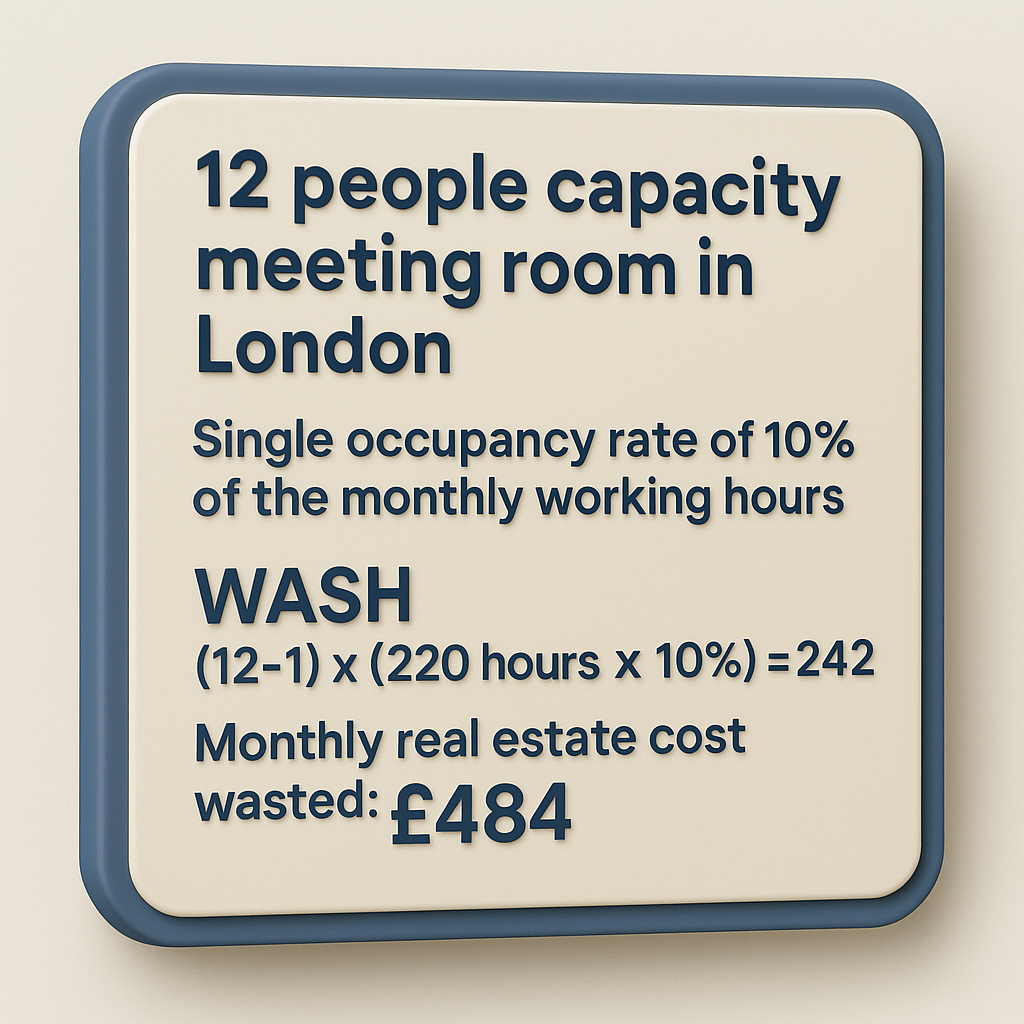Single Occupancy- Meeting Rooms Abuse

In today’s hybrid workplace, where the office is increasingly a destination for collaboration rather than individual work, the demand for meeting rooms has reached new heights. But there’s a hidden drain on space that many workplace leaders are still struggling to address: meeting room abuse.
This silent, often unintentional misuse of shared spaces—like a single person seating in a 10-seat room to take a private call—can create false scarcity, impact collaboration, and drive unnecessary real estate costs. Identifying and understanding these usage patterns through occupancy data is no longer optional—it’s essential.
The Two Faces of Meeting Room Abuse
- Booked Wrongly:
A room is officially reserved but ends up hosting a single occupant—commonly an executive needing privacy, or a lone participant in a virtual call with remote colleagues etc. While the calendar shows the room as “in use,” its seating capacity is completely underutilized. - Occupied Without Reservation:
Sometimes a meeting runs over, or someone casually claims an unbooked room for personal use. These ad-hoc squatting sessions may feel harmless but result in awkward confrontations or missed opportunities for teams who need the space but can’t access it.
These behaviors might seem isolated, but they accumulate into a much larger issue: a workspace that feels full, even when it’s not.
The Real Cost of Wasted Space:
Facility managers and workplace strategists often face mounting pressure to “solve” perceived meeting room shortages. The instinctive response? Add more rooms. But in today’s real estate climate, adding square footage is a high-cost move that requires a deeper justification.
And that’s the problem—abuse events skew the data, making rooms appear unavailable even when they aren’t being used effectively. As a result, organizations risk expanding unnecessarily, driving up real estate costs based on false demand signals.

Measuring the Impact with PointGrab’s WASH Index
To combat this, PointGrab introduced the WASH Index—Wasted Available Seat Hours—which gives the facility teams the visibility they need to measure the problem impact and act on it.
By calculating the number of available seat-hours (based on the meeting rooms capacity and the workhours of this site) across meeting rooms and highlighting instances of single occupancy in multi-seat spaces, the WASH Index helps organizations:
- Quantify the real scale of misuse
- Benchmark against industry or internal averages
- Identify hotspots—by zone, room type, or team behavior
- Reassess policy and set actionable KPIs to optimize utilization
Our customers data shows that 5-15% of meeting rooms time across floors are affected by single occupancy. For example a 12 seats room that was booked in February 25% of the available hours was actually occupied by single occupant 40% of that time, or 10% of the overall hours of the month, introducing 242 wasted available seat hours. These measures vary by layout, room sizes, and even geographical cultural differences . But in all cases, such 10% of available seat hours represents a real opportunity to reclaim wasted real estate spend.
Why Understanding the Why Matters
Smart data is just the beginning. Intelligent Space Management requires workplace leaders to act on insights—and for that they need to understand the reasons behind the behavior.
Is noise in the open plan pushing people into meeting rooms for private calls? Are there not enough phone booths? Is there a pattern of repeat offenders or certain teams? Is it a cultural phenomenon that needs to be eradicated such as perceived hierarchy rights that can influence room usage and then should leadership modeling can correct behavior?
In some cases, policy and education are needed. Things like minimum attendee requirements for larger rooms, or automated release of abused booking can make a big difference. In others, the data may highlight a legitimate gap in the floorplan where Design Intervention is needed—like single-person phone booths, focus pods, small 2-3 person huddle rooms, or designated quiet zones in the open plan can address insufficient infrastructure for hybrid office work needs. The answer isn’t always punitive. It’s strategic.
Small Changes, Big ROI
Reclaiming even a portion of the wasted 15% can translate into real savings (see box). Whether it means avoiding a costly office expansion or improving availability for collaborative teams, the ROI of addressing meeting room abuse is clear. ROI can also be derived from repurposing underutilized space identified through the data (e.g., converting a large, repeatedly misused meeting room into two smaller ones or a focus area).
And perhaps more importantly, it improves the workplace experience. Everyone can relate to the frustration and time waste when searching for available room across the floor and stepping onto single occupancy room usage. When spaces are used as intended, employees can focus on what matters.
Final Thoughts:
Meeting rooms are a shared resource. Their misuse—intentional or not—ripples across the entire workplace. Do you hear people struggle to find a meeting room? With the right data, tools, and mindset, workplace leaders can uncover these hidden inefficiencies, make informed decisions, and build environments that support collaboration, productivity, and cost efficiency
Want to see how the WASH Index can help your workplace?
Contact our team to learn more about how PointGrab’s occupancy intelligence can help you reclaim your space and optimize your floor plans.
